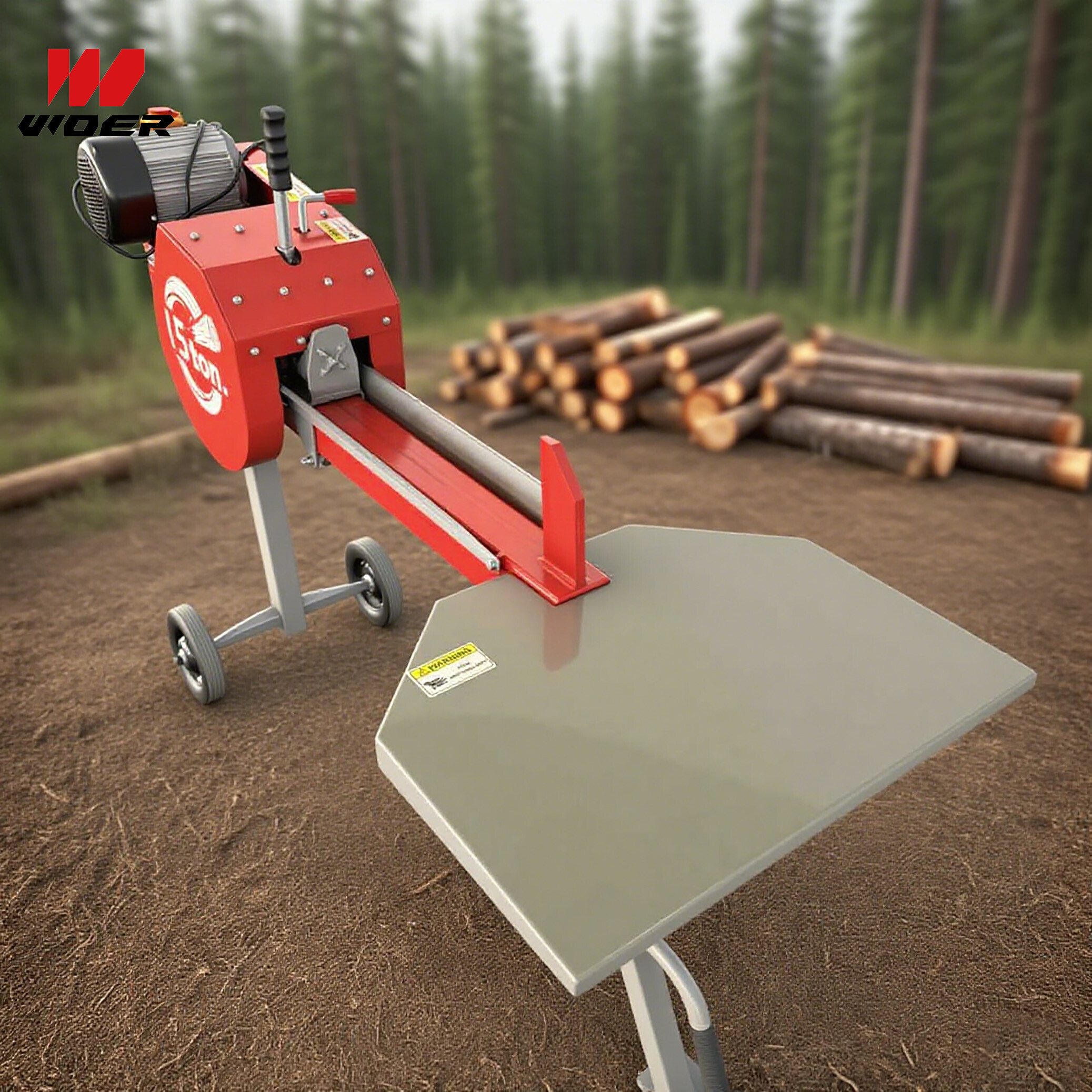Navigation
Contact us
Phone
Message

Regular maintenance is the difference between a reliable hydraulic log splitter and costly downtime. This guide provides five essential maintenance tips to keep your hydraulic log splitter, whether hydraulic, electric log splitter or gasoline-powered, safe and productive.
1. Perform Daily Pre-Shift Inspections
Start each shift with a consistent checklist. A quick walk-around prevents small issues from escalating. Inspect hydraulic hoses and fittings for abrasion, chafing or leaks; check cylinder rods for scoring or pitting; verify controls and safety interlocks operate smoothly. For log splitter electric and electric log splitter units confirm battery charge levels and electrical connectors; for log splitter gasoline engines, check oil and fuel levels and listen for abnormal noises during warm-up.
Daily Inspection Checklist
2. Maintain the Hydraulic System: Fluid, Filters, and Seals
Hydraulic components determine the performance and lifespan of a hydraulic log splitter. Use only the hydraulic oil grade recommended by the manufacturer to preserve viscosity, anti-wear and anti-foam properties. Contaminated oil accelerates wear of pumps, valves and cylinders; implement a scheduled oil analysis if uptime and precision matter in procurement or contract fulfilment.
Replace hydraulic filters at the intervals specified in your operator manual or sooner if fluid analysis indicates particulate contamination. Inspect seals and rod wipers for signs of leakage. A small oil leak quickly becomes a major maintenance event and safety hazard. For high-volume operations, consider condition-based maintenance supported by pressure gauges or inline particle counters.
3. Service Mechanical Components and Wear Items
Log splitter mechanical parts—wedge, beam, cradle, and ram—face heavy abrasion and impact. Keep the wedge sharp and free of nicks to reduce cycle times and strain on the hydraulic system. Tighten fasteners per torque specs to prevent loosening from vibration. Grease pivot points and bearings regularly using recommended lubricants to avoid unexpected failures during peak shifts.
For vertical log splitter models and wood log splitter configurations, check table supports and alignment regularly to ensure safe and efficient splitting of larger rounds. Keep the work area clear of debris to prevent jams that stress drive systems.
4. Adapt Maintenance to Powertrain Type (Hydraulic, Kinetic, Electric, Gasoline)
Different log splitter types require specific attention. Hydraulic log splitter operators focus on fluid cleanliness and valve integrity. Kinetic log splitter units, which store energy in a flywheel or spring, require inspection of belts, flywheel balance, and safety shielding to mitigate stored-energy hazards. Electric log splitter and log splitter electric variants demand battery maintenance, motor brushes check (where applicable), and electrical insulation integrity. For log splitter gasoline engines, follow engine service intervals: spark plugs, air filters, fuel systems and carburetor or injection tuning.
5. Seasonal Care, Storage, and Documentation
Seasonal use patterns, especially winter idle periods, require preservation steps. Drain or stabilize fuel in gasoline log splitter models to prevent varnish and gumming. For hydraulic systems, change oil and filters before long storage to reduce acid buildup and moisture contamination. Store machines in a dry, sheltered area and protect exposed metal with corrosion inhibitors if long-term storage is anticipated.
Maintain clear service records for each machine. Documentation showing regular maintenance, parts replaced and fluid analysis results supports warranty claims and increases resale or trade-in value. For commercial purchasers and procurement managers, documented maintenance reduces total cost of ownership and supports capital expenditure approvals.
Application Scenarios, Safety Standards and Compliance
Understanding application scenarios helps tailor maintenance: farm and residential users differ from commercial firewood contractors or municipal services in duty cycle and repair expectations. Align maintenance practices with safety standards such as ISO machine safety directives and local standards like ASTM or EN where applicable. Follow lockout/tagout procedures and PPE requirements when servicing hydraulics and powertrains. Regular operator training reduces human error and incident rates—critical for contract execution and corporate risk management.
Common Failure Modes and Preventive Actions
- Slow cycle times: check hydraulic fluid condition, pump wear and filter blockage.
- Hydraulic overheating: verify oil grade, cooling, and duty cycle to avoid vapor lock.
- Hose bursts: replace aged hoses and use abrasion protection; maintain proper routing.
- Wedge damage: sharpen or replace to avoid overloading hydraulic components.
Cost Considerations and ROI of Preventive Maintenance
Routine maintenance reduces unexpected downtime and expensive component replacement. A planned maintenance program typically yields lower lifecycle costs versus reactive repair, especially for higher-hour units like commercial vertical log splitter or wood log splitter fleets. Include parts, labor and scheduled downtime in ROI calculations when comparing purchase options such as log splitter for sale cheap offers—sometimes lower purchase price increases long-term operating costs.
How to Implement a Maintenance Program
Create a tiered program: daily operator checks, weekly lubrications, monthly hydraulic inspections, and annual full service including oil analysis and pressure testing. Assign clear responsibilities: operators handle pre-shift checks; maintenance technicians perform certified hydraulic services. Maintain spare-parts inventory for high-wear items (seals, hoses, filters, wedges) to minimize MTTR (mean time to repair).
Why Choose Professional Support and Training
Proper maintenance builds trust with clients and stakeholders—EEAT principles matter. Rely on certified technicians for complex hydraulic service or electric motor repairs. Use manufacturer or OEM-approved parts and follow technical bulletins. For organizations evaluating purchases, request maintenance records and serviceability metrics as part of vendor selection.

This stunning beach house property is a true oasis, nestled in a serene coastal community with direct access to the beach.
Contact
West Street, Melbourne Victoria 3000 Australia